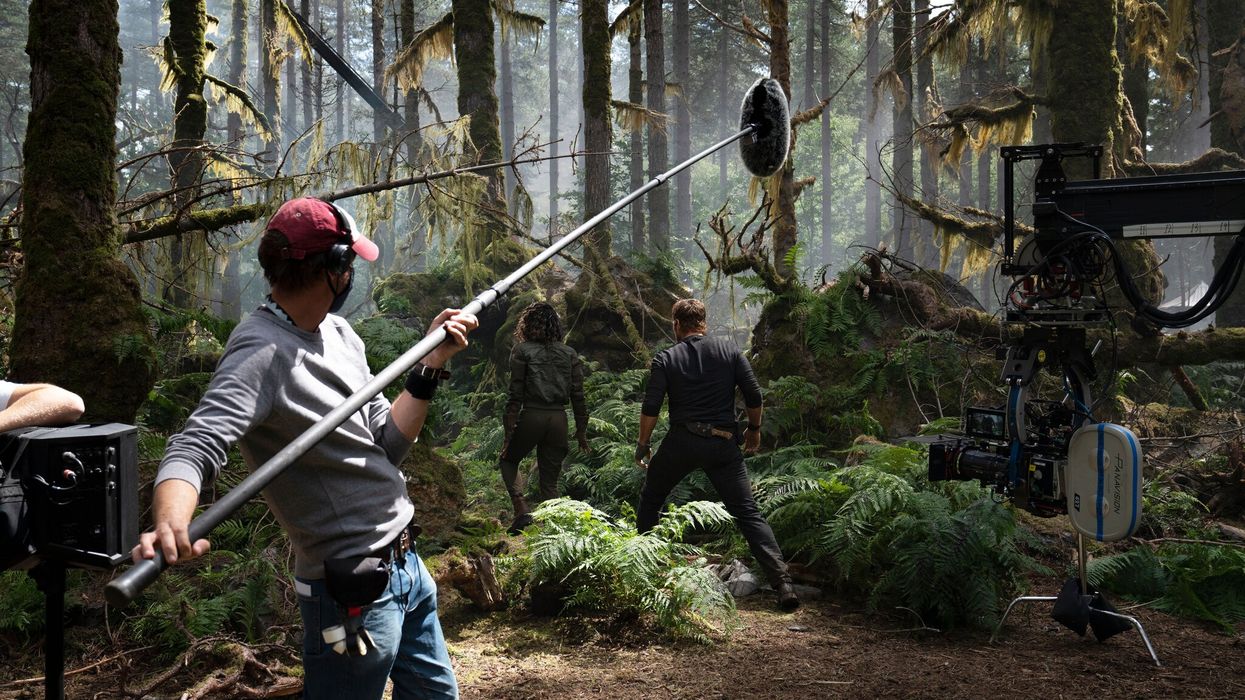'Jurassic World: Dominion’ Used 40,000 COVID Tests During Shooting
Jurassic World: Dominion began pre-production before COVID-19 and now has wrapped in a very different world.

One day, hopefully soon, coronavirus will be gone—or at least the worst of its effects. Eventually, quarantining, wearing masks, and standing awkwardly far away from other humans will just be those weird things we all had to do that one year, and life will move on. But the experiences we've had during this very strange time in history have shown up in our articles and on the sets we've worked on.
But I don't think any film has had to deal with corona on a scale as large as Jurassic World: Dominion.
The movie was in pre-pro before COVID hit and then had to adjust on the fly to figure out how to shoot safely again. The lessons learned on this set will be applied to all the other movies shooting this and next year until the world is successfully vaccinated.
You can almost think of the movie as a $165M experiment for the industry.
The Universal blockbuster wrapped after an unprecedented shoot, which required millions of dollars spent on protocols, and for cast and key crew to isolate in a bubble for months.
“There are a lot of emotions,” director Colin Trevorrow told Deadline.
“I’m not sure I can put it into words,” he continues. “It has been remarkable. Our crew and our cast has been so resilient. All producers have worked around the clock to make it the best it can be. It has been inspiring.”
And it's not just the director praising the efforts. Donna Langley, Chairman Universal Filmed Entertainment Group, said: “As we continue to contend with the challenges facing our industry during a global pandemic, the collaborative nature of this production allowed us to safely complete nearly 100 days of shooting, and we are so proud of what this team was able to accomplish.”
So how did they accomplish making a blockbuster in these insane times?
Well, more than 40,000 COVID-19 tests were conducted, with .25% returning positive. That's a really strong rate, especially when you factor in false positives. That means only around 100 came back positive.
According to The New York Times, "Four crew members in Britain have tested positive for the coronavirus since early July. Two had yet to be on the set. They were quarantined for two weeks, and after three negative tests were permitted to return to work. The other two were similarly isolated, as was everyone they had been in contact with. No one has become seriously ill, the studio said. (Of the crew members who were sent to Malta in advance, four tested positive. They have been put into isolation.)"
But conducting those 40,000 tests added an undisclosed amount to the budget. Surely millions of dollars.
There was a 107-page safety manual that details everything from the infrared temperature scanners the cast and crew encounter upon arrival to the vacuum-sealed meals provided by masked workers standing behind plastic partitions in the takeout-only cafeteria.
Nothing was taken for granted.
And to make sure key elements were not infected, the studio set up a Green Zone for the shooting cast and crew and all workers were temperature-tested every day. Deadline reports that "two walk-through temperature testing stations were built at each end of Pinewood Studios with capacity of 1,000 crew over two hours, and each test station had a complement of doctors, nurses and isolation booths."
There were also couches, blankets, lamps and plants. Each time someone leaves or enters the Green Zone, he or she must wash hands.
In addition to all of that, there were also 150 hand sanitizer stations and 60 extra sinks. Cleaning was doubled, and, in the evenings, all communal areas and facilities were antivirally fogged.
Deadline estimates the studio spent between $6-8 million on protocols alone.
While this sounds like a prison-like lockdown, that's not really the case. Think of this more like the NBA bubble with a movie shooting inside.
“We lived together, ate together, told stories, shared our fears and hopes, played Frisbee on the lawn… there was a lot of laughter at a time when it has been hard to find things to laugh about,” explains Trevorrow. “We were all far from those we loved at a time when you want to be closest to them. I missed my family greatly. I was away from them for four months. But the cast in our bubble became another family.”
There's hope that this familiarity may have helped the film. As Trevorrow explained, “I think that close proximity to each other has made the movie better. Everything we were going through emotionally we would share. We would rehearse on Sundays, we crafted the characters, which made the emotion of the film richer. I think the movie will be stronger for it.”
Only time will tell there.
For now, this is an amazing feat that should be congratulated. While the precautions taken here may not translate to indie film, they certainly have given other studios a template for how to conduct themselves safely.
Hopefully, the time for these precautions has almost ended. But if you are a studio that wants to get films ready for release when we come back, now you know how to do it.
Let us know what you think in the comments.













